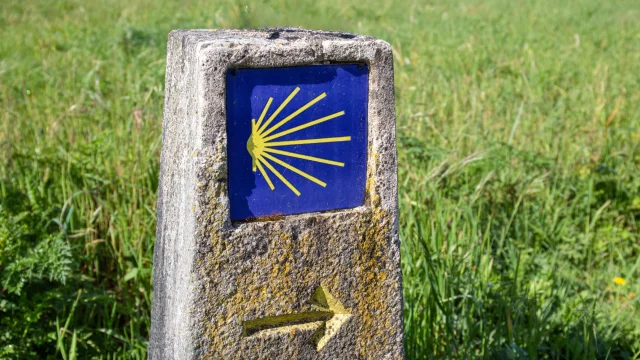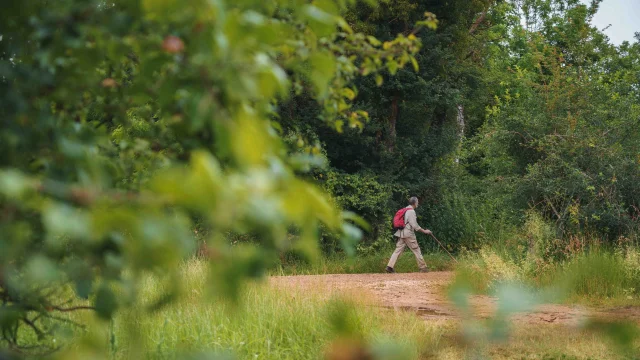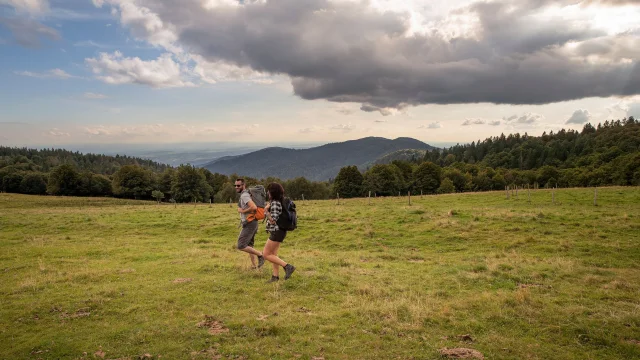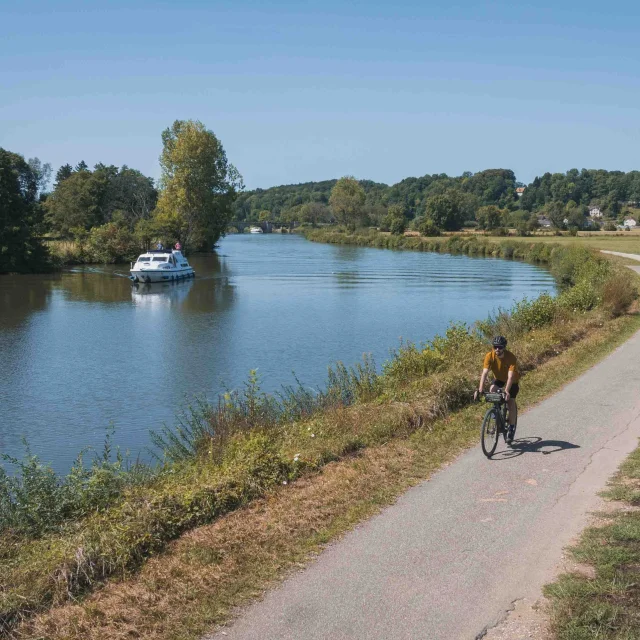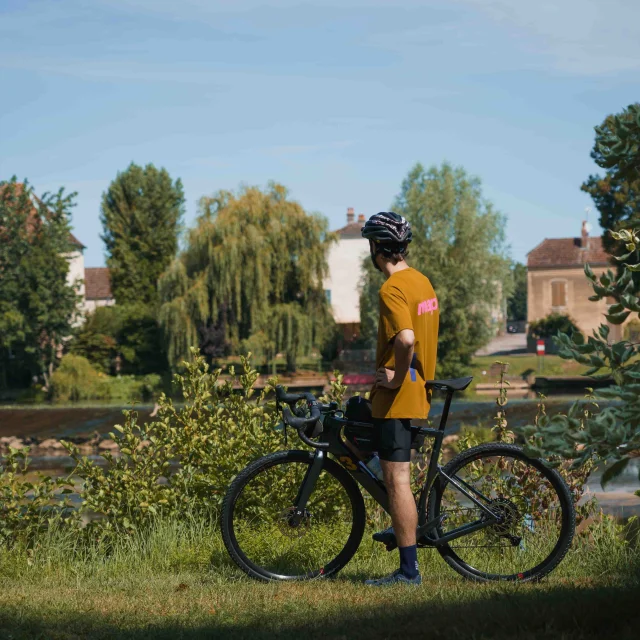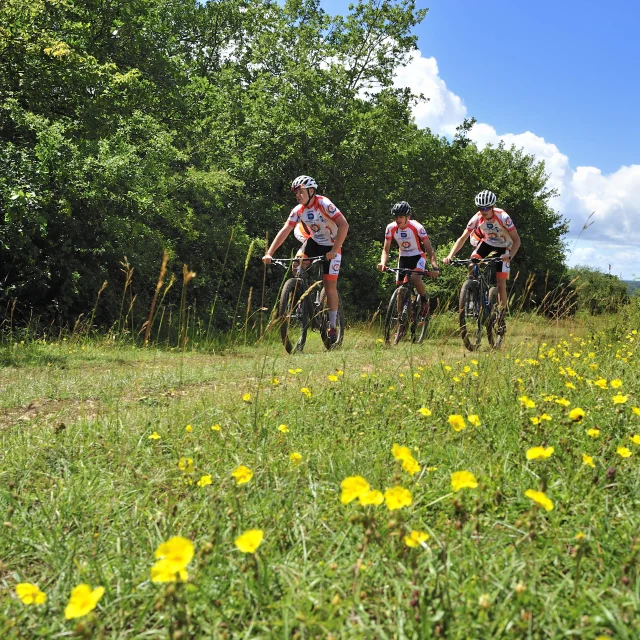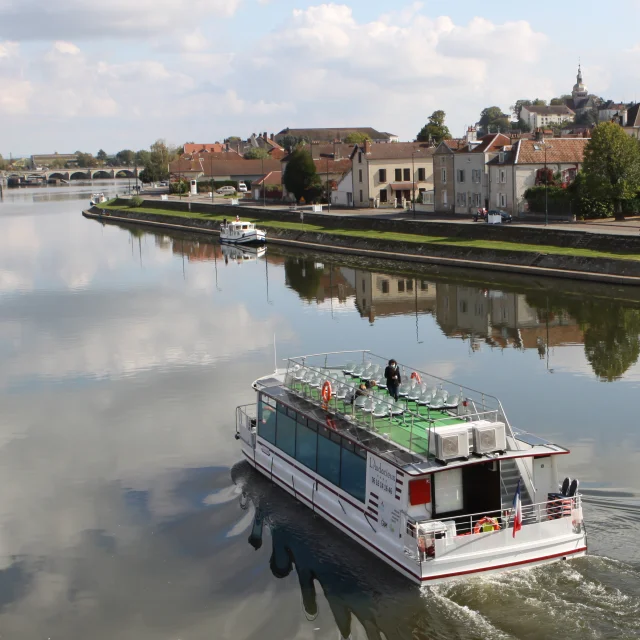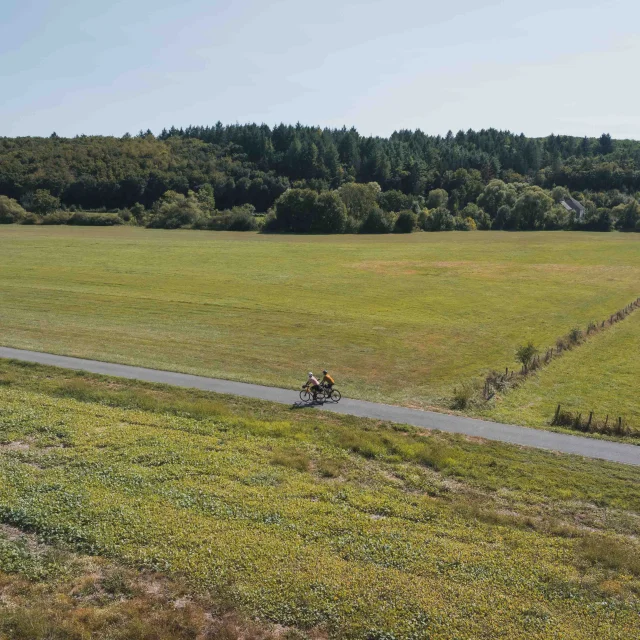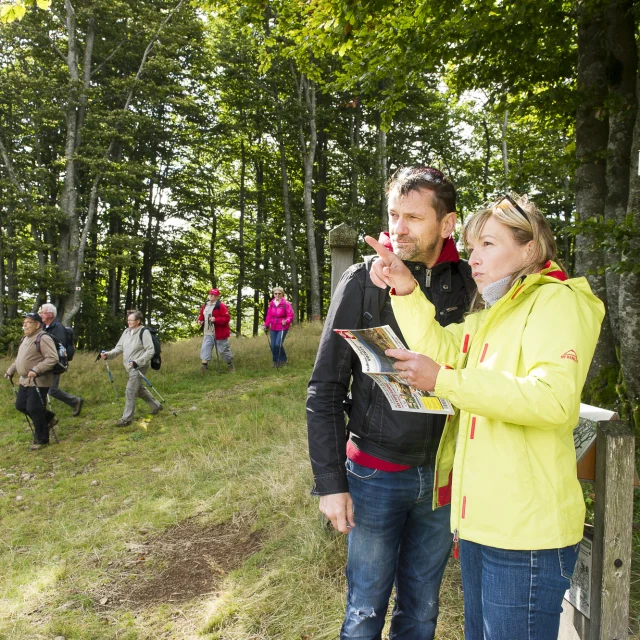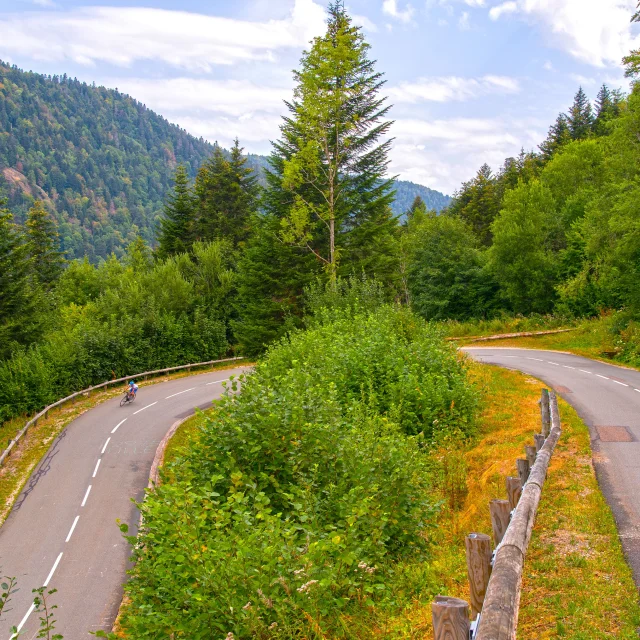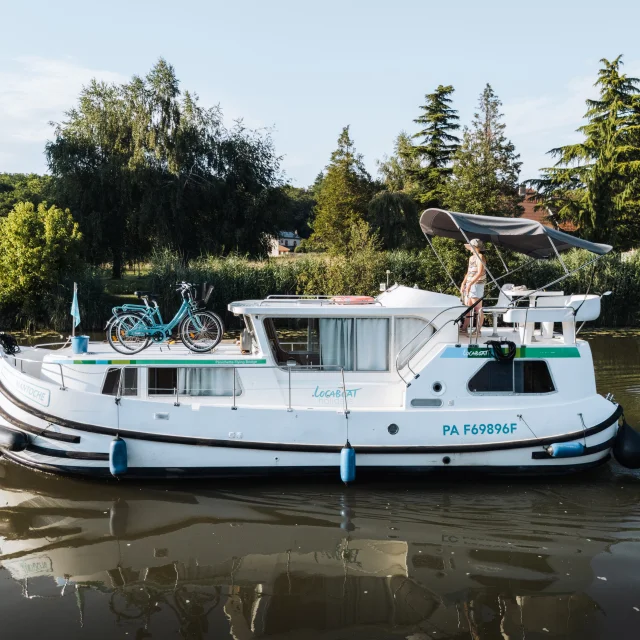Compostela is the destination of dreams for walkers from all over the world. The route winds its way through the landscapes of Haute-Saône, combining heritage discovery and serenity. Entering the département from the Doubs, pilgrims on their way to Compostela still have some two thousand one hundred and twenty-five kilometres to cover to reach their goal. Leaving the Haute-Saône, once they have reached Marnay, the distance is only two thousand kilometres, as the route splits into two stages at Gy.
This means that the most publicised pilgrimage in the world covers some two hundred kilometres of signposted paths in the département.
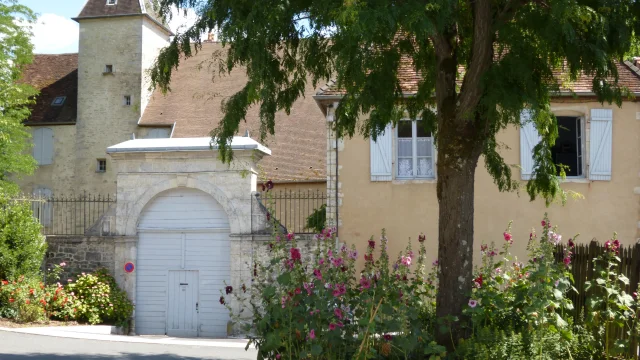 View of a gateway to the Château de Marnay - Cité de caractère - Vallée de l'Ognon
View of a gateway to the Château de Marnay - Cité de caractère - Vallée de l'Ognon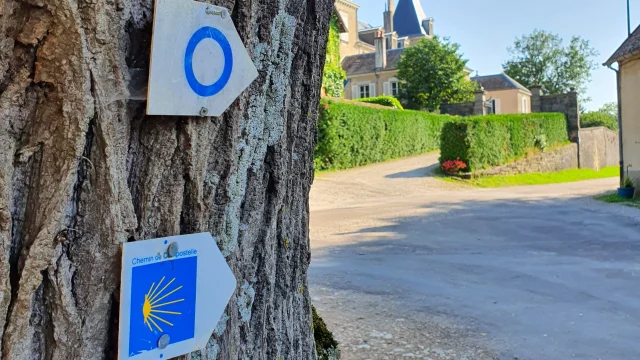 Saint-Jacques Compostelle signs on a tree in Gy - Vallée de l'Ognon
Saint-Jacques Compostelle signs on a tree in Gy - Vallée de l'OgnonThere are two routes, one from Strasbourg, the other from Switzerland. They merge towards Héricourt. At Gy, the Burgundy route heads towards Vézelay, while the Franche-Comté route continues towards Le Puy-en-Velay. In all, around ten stages of the millenary route divide the Haute-Saône route.


